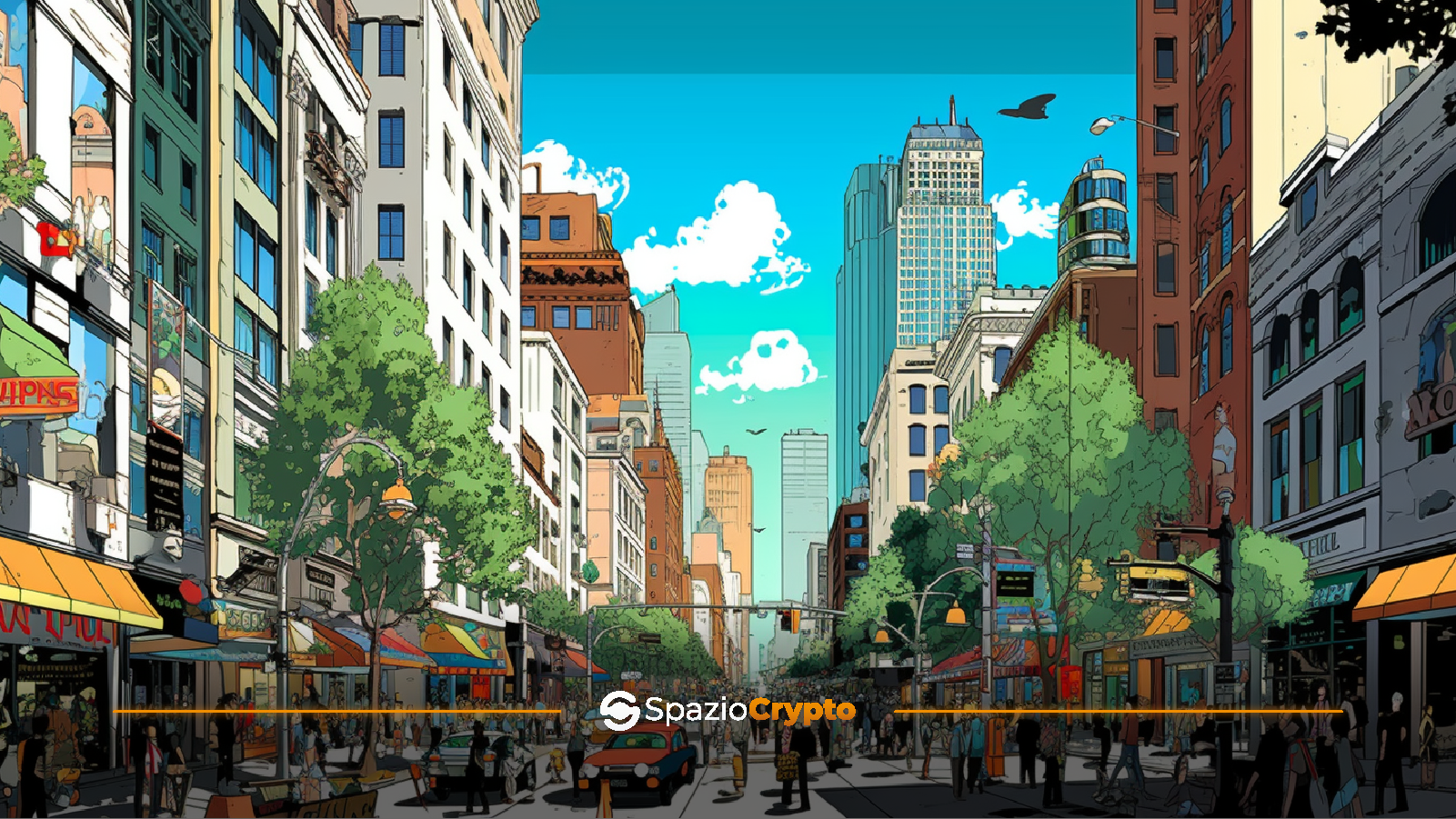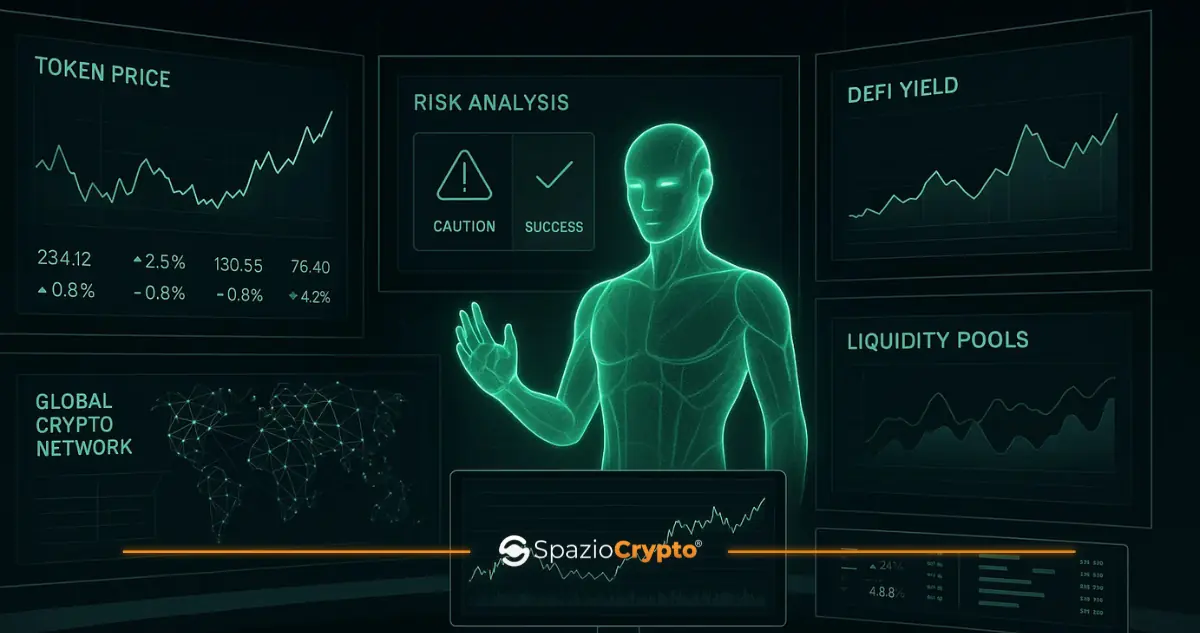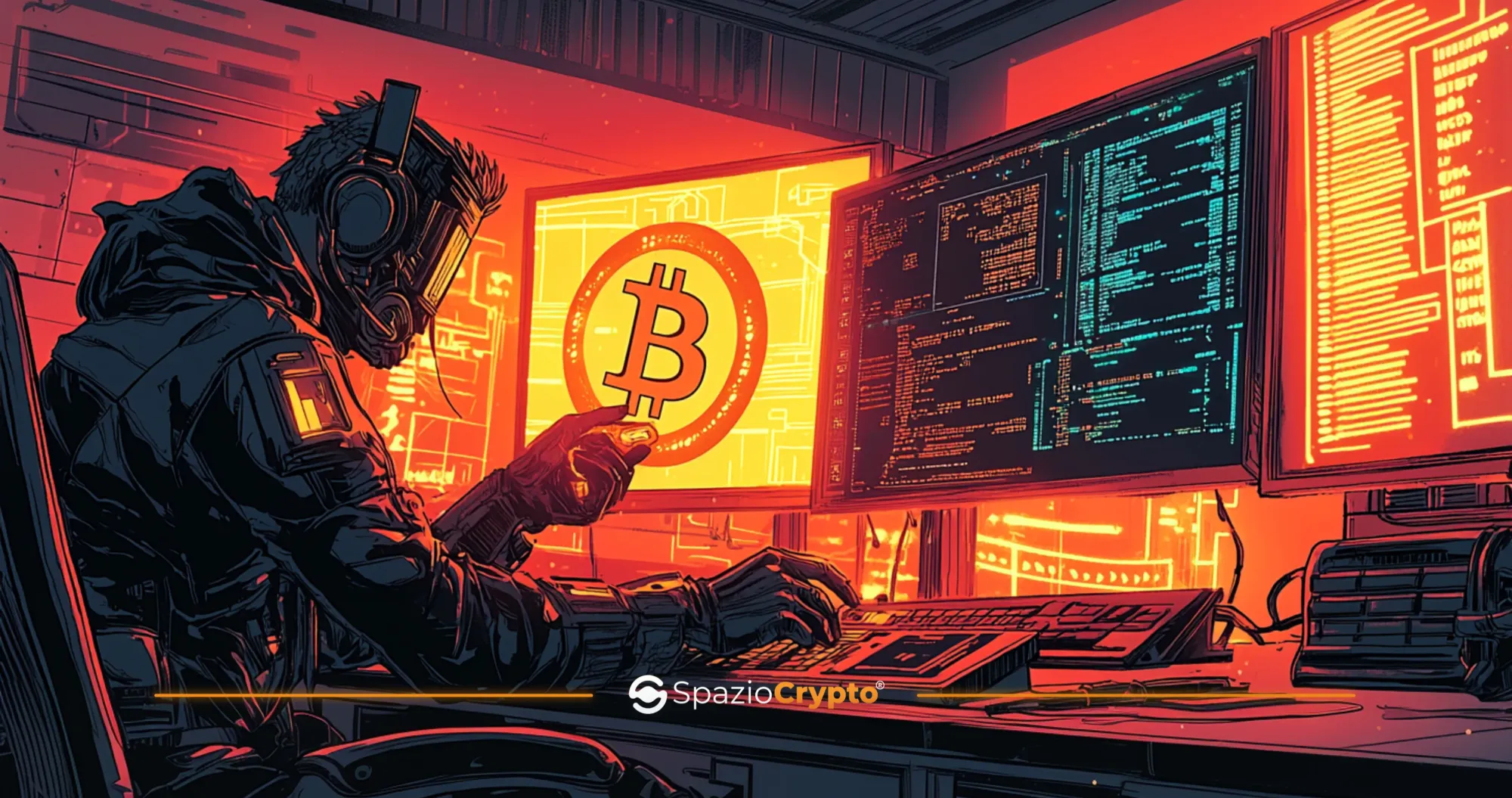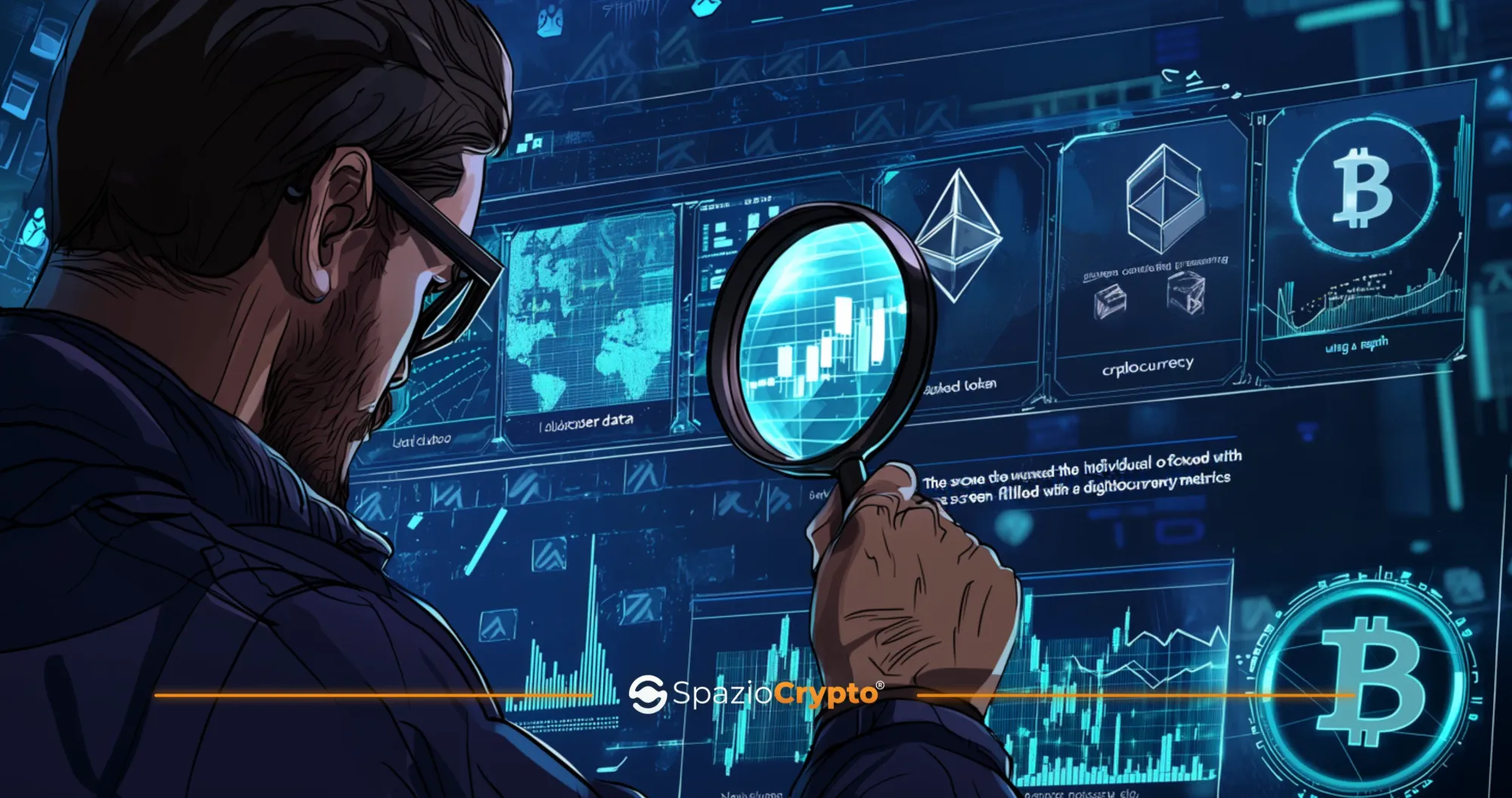The financial world is currently on the brink of a revolutionary transformation. The emergence of Real World Assets (RWA) cryptocurrencies marks the union of the tangibility of real assets and the cryptocurrency universe, opening the door to an unprecedented panorama of opportunities, as Blackrock CEO Larry Fink also argued recently about the tokenization of assets.
Imagine a world where real estate, works of art, precious metals and even trade receivables can be digitally represented as tokens, tradable on blockchain as easily and quickly as cryptocurrencies like Bitcoin or Ethereum. This is the promise of crypto RWAs, which promise to democratise access to investments, increase the transparency and efficiency of financial markets and create new opportunities for individual and institutional investors.
In this analysis of Spaziocrypto, we will dive into the world of Real World Assets, exploring how they work, their use cases and potential impact on the future of the financial system. We will discover how RWAs are breaking down traditional barriers, opening the door to a new world of more accessible, inclusive and innovative investments.
What Are Real Assets (RWAs)?
Real World Assets (RWAs) cryptocurrencies represent tangible, physical assets that possess intrinsic value, distinct from their market price. RWAs include a wide range of assets such as:
- Property:Land, residential and commercial buildings, industrial properties and other real estate.
- Artworks:Paintings, sculptures, antiques and other forms of tangible art.
- Precious Metals:Gold, silver, platinum and other precious metals with intrinsic value.
- Financial Credits: Loans, bonds, equities and other financial instruments that represent debt or property rights.
For investors seeking exposure to traditional assets, the barrier to entry can be even higher than in the crypto world. If you think about investments in real estate and commodities, for example, you will quickly realise that you need some initial capital and expertise to move into these types of investments, and that there are numerous geographical and legal barriers. With RWAs, on the other hand, you can tokenize real assets on blockchain, and make them globally accessible, and transactions can be transparent, immutable, and verified in a decentralised manner.
The Use Cases of Crypto RWAs
The emergence of RWAs opens up a range of new opportunities for individual and institutional investors. Below are some concrete examples of how crypto RWAs are being used in different sectors:
Real Estate
- Tokenisation of fractional properties: Investors can purchase shares of real estate via RWA tokens, lowering the barriers to entry in a traditionally illiquid market.
- Real Estate Financing: RWA crypto tokens can be used as collateral for real estate loans, offering new financing options for owners and developers.
Artworks
- Democratisation of Access to Art: RWA tokens enable fractional ownership of artworks, making them accessible to a wider audience of collectors.
- New Business Models: RWA tokens can be used to create new business models for buying, selling and managing works of art.
Precious Metals
- Accessible Gold Investment: Gold-based RWA tokens offer a convenient and secure way to invest in this precious metal.
- Inflation hedging: RWA crypto tokens based on precious metals can act as a hedge against inflation and economic instability.
Trade Credits
- Access to finance for SMEs: RWA tokens based on trade credits can facilitate access to capital for small and medium-sized enterprises.
- New Investment Opportunities: RWA crypto tokens offer investors new ways to diversify their portfolios and obtain returns from trade credits.
Benefits-for-Investors
- Portfolio Diversification: RWA cryptos offer investors the ability to diversify their portfolios beyond traditional asset classes such as stocks and bonds.
- Potentially higher returns: RWAs can offer higher returns than traditional assets, particularly in emerging markets.
- Access to new assets: RWAs open up access to investments that were previously illiquid or inaccessible to many investors.
challenges and risks
- Market volatility: The cryptocurrency markets are known for their volatility, and this can affect the value of RWAs.
- Uncertain regulation:The regulatory framework for RWAs is still evolving, creating uncertainty for investors.
- Lack of familiarity:Many investors are still unfamiliar with crypto RWAs, which can hinder widespread adoption.
Despite the challenges, the potential for RWAs to revolutionise the investment landscape is immense. Their ability to increase the liquidity, efficiency and transparency of financial markets opens new doors for individual and institutional investors, creating a more inclusive and accessible future for all.
RWA Crypto: Tokenization is Now
RWAs stand at the dawn of a revolution that has the potential to transform the global financial landscape. The integration of tangible real assets with blockchain technology opens the door to a number of opportunities that could:
- Increase the efficiency of markets:The tokenization of RWAs can reduce transaction costs, accelerate settlement times and improve the transparency of financial markets.
- Democratize access to investments: RWAs can make investments in traditional assets such as real estate, artwork and precious metals more accessible to a wider audience of investors.
- Creating new financial instruments: Blockchain technology can facilitate the creation of new innovative financial instruments based on RWA, such as index funds and derivative products.
- Promoting financial inclusion: RWA can enable unbanked and underbanked people to access formal financial services and build wealth.
However, to reach their full potential, RWAs face some challenges:
- Regulation: A clear and consistent regulatory framework is necessary to ensure investor protection and promote financial stability.
- Infrastructures:The development of robust and reliable infrastructures for the custody, trading and management of RWAs is critical to their widespread adoption.
- Education and Awareness: There is a need to increase awareness and understanding of RWAs among investors, financial practitioners and regulators.
Pendle and Mantra DAO
Despite challenges such as uncertain regulation and the need for robust infrastructure, the potential of RWAs is immense. Two illustrious examples of RWAs that have gained notoriety are Pendle and Mantra DAO.
Pendle
Pendle is a DeFi (Decentralised Finance) platform that allows users to tokenize their future returns and exchange them in a liquid manner. Through Pendle's protocol, users can monetise their returns in advance, creating a new market for future assets.
Mantra DAO
Mantra DAO is a DeFi platform that aims to democratise access to financial services through decentralised governance and revenue sharing. It offers a range of products and services, including staking, lending, governance and project incubation, enabling users to take advantage of the opportunities of decentralised finance in a safe and accessible way.
With the emergence of projects such as Pendle and Mantra DAO, it is evident that Crypto RWAs are gaining ground as a driving force for innovation in the financial sector. Looking ahead, we can look forward to further developments and the expansion of RWA's role in redefining the very concept of investment and finance.
The Future of RWA Real World Assets
Crypto RWAs are set to revolutionise the investment landscape, offering an unprecedented fusion of real assets, blockchain technology, and Decentralised Finance (DeFi). Here are some key points to keep in mind:
- Democratization of Investment: RWAs lower barriers to entry, allowing a wider public to participate in investments in traditional assets such as real estate, artwork, and precious metals.
- Efficiency and Transparency:The tokenization of crypto RWAs increases liquidity, reduces transaction costs, and improves the transparency of financial markets, creating a fairer and more accessible environment for all investors.
- New Financial Opportunities: Projects such as Pendle and Mantra DAO demonstrate the potential of RWAs in creating new business models and financial services, broadening the landscape of investment opportunities and access to financial services.
Despite the challenges and uncertainties, the future of crypto RWAs looks promising. With effective collaboration between all players in the financial sector and clear and consistent regulation, at Spaziocrypto, we are convinced that crypto RWAs can radically transform the way we invest and interact with real assets, paving the way for a more inclusive, efficient and innovative financial future.








